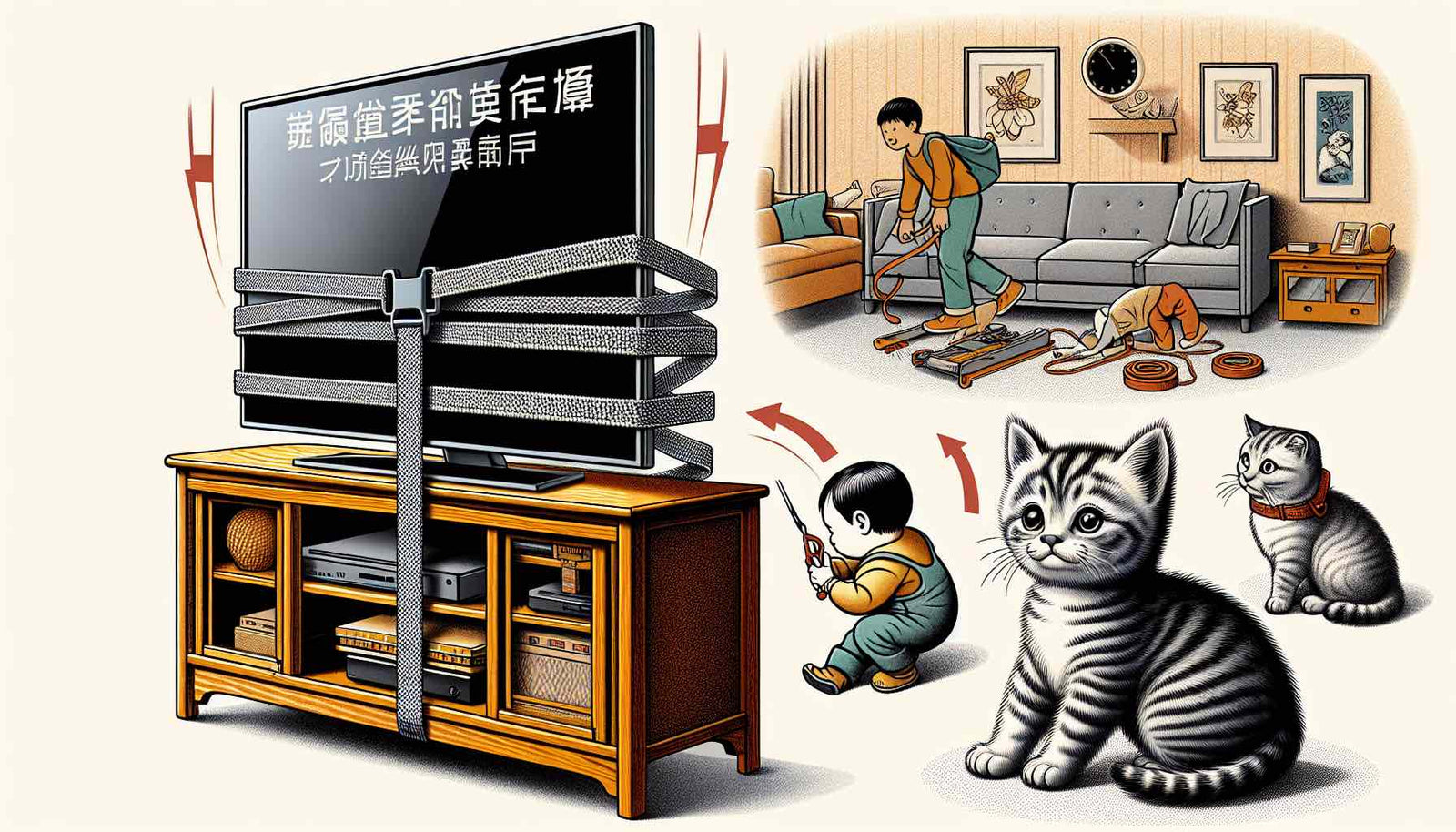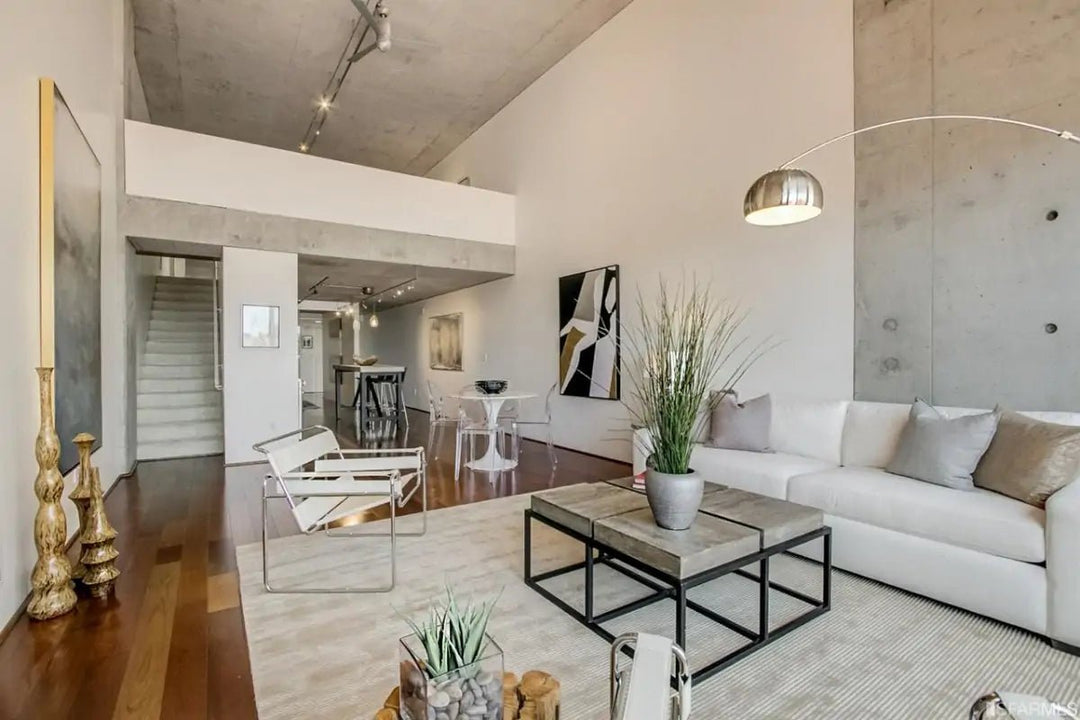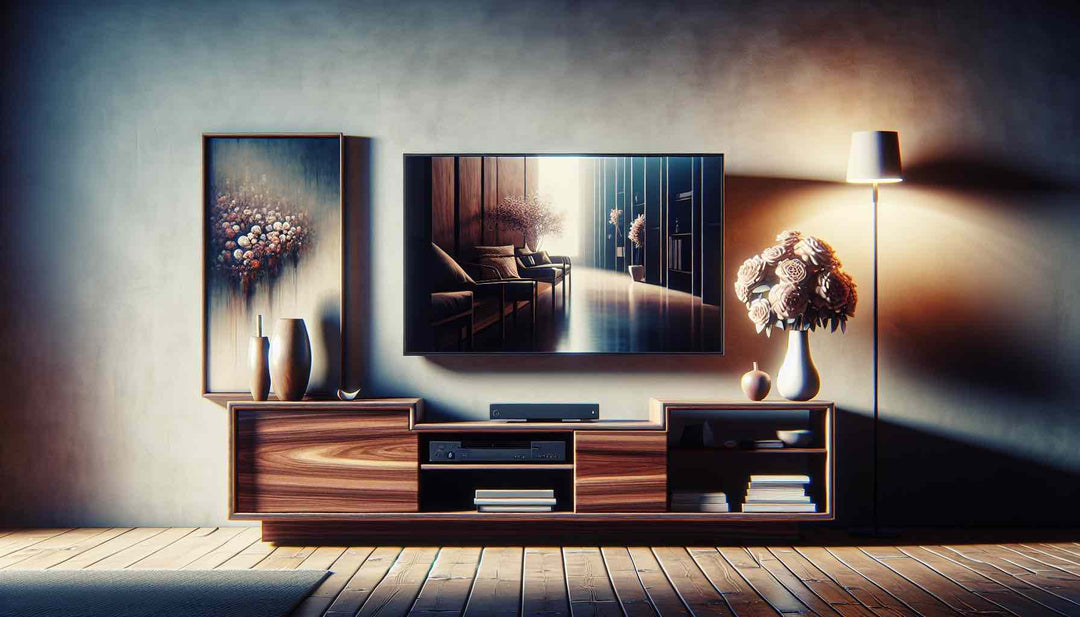TV Stand Safety Tips to Prevent Tip-Overs

Looking for ways to keep your TV from tipping over? This guide covers essential TV stand safety tips to help you secure your TV and ensure a safer home environment.
Key Takeaways
- Choose a stable TV stand. It should be sturdy and designed to hold your TV’s weight and size. This will minimize the risk of tip-overs.
- Secure your TV to the stand or wall using anti-tip safety straps. This prevents accidental tip-overs, especially if you have pets or children.
- Mounting your TV on the wall enhances safety. It keeps the TV out of reach and reduces the risk of tip-overs.
Choose a Stable TV Stand

Selecting a sturdy, stable TV stand is the first step to ensure TV safety. Choosing the right TV stand can significantly reduce the risk of a tip-over accident. Using common furniture may seem tempting. But, not all pieces can support the weight and size of flat screen TVs.
Avoid using shelves or dressers as TV stands. These pieces of furniture are often not built to handle the weight of a TV and can easily become unstable. It’s recommended to use a TV stand that is specifically designed to hold your television. These stands are typically low, wide, and sturdy, providing a solid base. Place your TV as far back on the tv’s stand as possible to minimize the risk of it tipping over.
When selecting a new TV stand, consider the following:
- The size and weight of your TV.
- Ensure the stand is rated to support your TV’s specifications
- Never compromise on quality. Buying a durable, well-made stand can bring peace and safety to your household.
Secure Your TV to the Stand
After securing a stable TV stand, it becomes paramount to fasten your TV to the stand. Anti-tip safety straps are an essential tool in this regard. These straps can anchor your TV to the entertainment center. They can also anchor it directly to the wall. This prevents it from tipping over.
The use of TV safety straps offers a sense of security. Knowing that your TV is securely fastened means you don't have to worry. It won't be toppled by pets or small children. Installing these straps is easy. It only requires a few tools. Most customers find the installation easy. It often takes less than five minutes with a screwdriver.
Many types of straps are available. They range from heavy dual cable straps to simpler models. They usually come with different sizes of screws and bolts. These fit various TVs and situations. Be sure to find a stud or use appropriate drywall fasteners. This will prevent regular screws from easily sliding out of drywall. By securing your TV properly, you significantly reduce the risk of accidents in your home.
Wall Mounting as an Alternative
Mounting on the wall is a great alternative. It completely removes the risk of a TV tip-over. Mounting a TV on the wall adds safety by keeping the TV out of reach. It also saves space in your room.
Wall mounting can significantly enhance your viewing experience. It allows you to position the TV at eye level. This can help reduce neck strain and improve comfort. Also, wall-mounted cable channels can keep cables neat. They also keep cables out of children's reach.
Proper installation is key to ensuring the safety of a wall-mounted TV. Make sure to use a wall stud for secure anchoring. TV mounts are cheap. They provide a strong way to keep your TV safe.
The optimal height for mounting a TV is generally to have the center of the screen at eye level when seated, which is typically about 42 inches (107 cm) from the floor for most living rooms.
Mounting your flat panel TV to the wall using a wall mount makes for a safer and more organized living space. This is especially true when you have pros do the job.
Proper Placement of the TV Stand
The location of your TV stand in the room plays a pivotal role in preventing tip-overs. It is advisable to avoid placing the TV on dressers or chests. Children may be tempted to climb on the drawers. This could cause both the dresser and TV to topple over.
Position the TV as far back on the stand as possible to reduce the risk of it tipping over. Also, avoid using furniture not made for holding a television. It may be unstable and increase the risk of accidents.
Proper placement and the right furniture can go a long way in ensuring the safety of your TV setup.
Keep Cables and Remotes Out of Reach
Cables and remotes can be enticing to children. They draw kids to the TV area in a child’s room and increase the risk of accidents. To prevent this, wrap and secure cables to prevent them from being tugged on. Solutions like clips or sleeves can manage cables. They help keep cables organized and out of reach.
Consider using cable ties to bundle and secure excess cables behind the TV. This not only keeps the area tidy but also reduces the risk of children pulling on them and causing the TV to tip over.
Additionally, store remote controls and other attractive objects out of sight. By keeping these items away from the TV, you minimize the chances of children being drawn to the area. They might cause a tip-over accident. Read more from our blog post on tips for cable management.
Additional Safety Precautions
In addition to securing your TV, taking extra safety measures throughout your home is necessary. All furniture, regardless of size or weight, should be secured to the wall to prevent tip-overs. Heavy-duty furniture straps or steel cable anchors are recommended for this purpose.
Make sure the anchors can hold the furniture's weight and the items on it. They should also hold an extra 60 lbs (27kg's) to simulate a child's weight. For older, unsteady furniture, inserting a shim can help prevent wobbling.
Finally, check the straps and anchors. Do this periodically to ensure they are still secure and intact. By taking these extra steps, you can further reduce the risk of tip-over accidents in your home.
What to Do in Case of a Tip-Over Accident
Even with all precautions in place, accidents can occur. If a tip-over accident occurs and causes injuries, seek medical attention right away at an emergency room. Even if the injuries seem minor. A seemingly minor injury could potentially develop into a serious injury. Document the incident by informing your medical provider about how the injury occurred.
Report the incident to the Consumer Product Safety Commission. Reporting can help identify potential hazards, such as tv tip overs, and prevent future injuries or fatalities. Remember, every 3 weeks, a child dies due to a TV tip-over. Your report could contribute to safety improvements and save lives.
Summary
In summary, to prevent TV tip-overs, choose a stable TV stand. Secure your TV with safety straps. Consider wall mounting. And, put the TV stand in the right place. Also, keeping cables and remotes out of reach. Taking more safety steps can greatly reduce the risk of accidents.
By implementing these tips, you can create a safer home environment for your family. Let’s take these steps seriously and protect our loved ones from potential dangers.
Frequently Asked Questions
Why shouldn't I use a dresser as a TV stand?
Using a dresser as a TV stand can be unsafe. Dressers can't hold TVs and can easily tip over. This is especially true if children climb on them.
How do TV safety straps work?
TV safety straps work by securing the TV to the stand or wall, preventing it from tipping over.
What are the benefits of wall mounting a TV?
Wall mounting a TV offers added safety. It also optimizes space and can improve viewing angles. This makes it a practical choice for your living space.
How can I keep cables out of children's reach?
You can use cable management solutions. These include clips or sleeves. They keep cables organized and out of reach. This can help prevent children from accessing the cables. It can also stop them from potentially harming themselves.
What should I do if a tip-over accident happens?
If a tip-over accident happens, get medical help. Then, write down what happened and report it to the Consumer Product Safety Commission. Take these steps as soon as possible to ensure proper care and prevent future accidents.

















